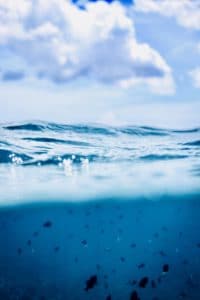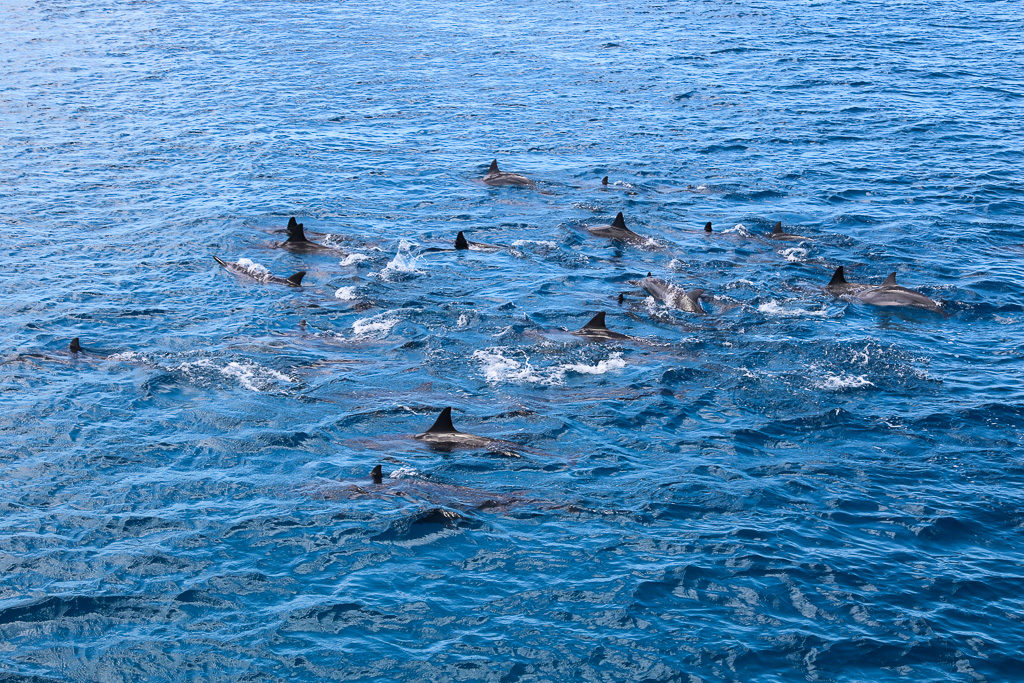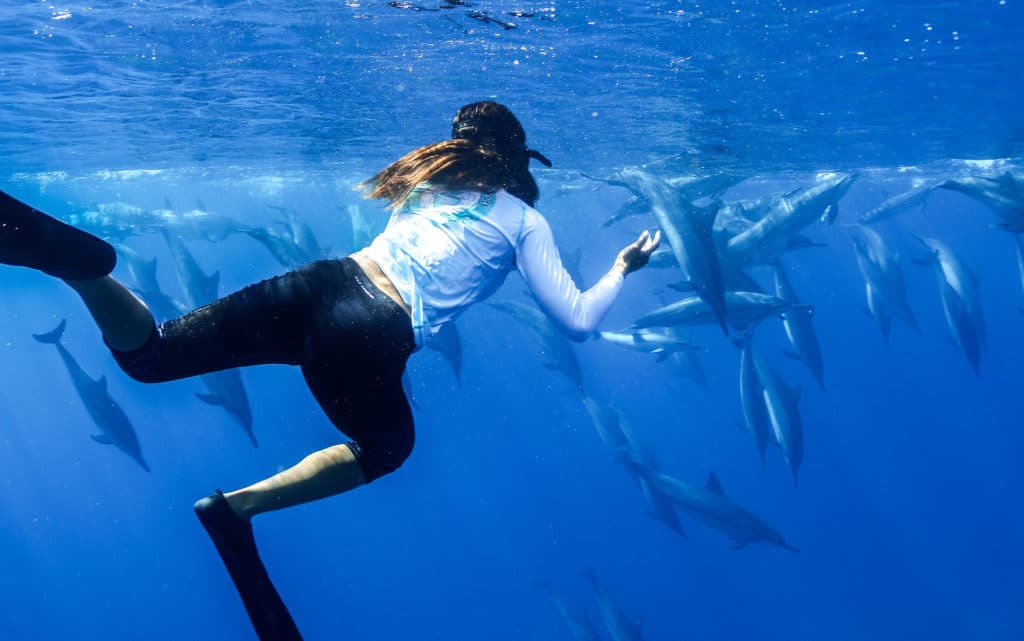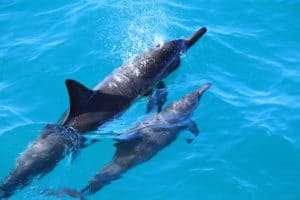The new Netflix documentary series Our Planet shares some of the world’s most captivating wildlife stories with raw, stunning imagery. And if you’re like us, many of the things you’ll learn will surprise you.
Since our tours here in Hawaii revolve around the ocean, we paid particularly close attention to High Seas (Episode 6). We encounter spinner dolphins almost every day on our Dolphins and You tours, but the video in this series still left us awestruck.
We recommend watching the full series for a well-rounded experience, but here’s some fascinating facts you’ll learn from the High Seas episode:
#1: A Main Prey of Spinner Dolphins is Lanternfish
One of the reasons dolphins still thrive is because we don’t share the same taste in fish.
One of dolphins main food sources is lanternfish, which spend most of their time in the depths of the sea. We don’t eat lanternfish because they are out of our reach.
Dolphins, however, are able to use sonar to locate the fish and drive them toward the surface for them to eat.
#2: Bluefin Tuna Use Dolphins to Find Lanternfish
Endangered Bluefin Tuna are some of the ocean’s fastest predators. But they cant find lanternfish alone.
The tuna trail behind spinner dolphins and rely on the dolphins’ sonar to help them find and eat lanternfish, too.
#3: Spinner Dolphin Pods Can Reach 10,000 Members
Spinner dolphins are very social animals. They are rarely seen alone and always travel in family groups or pods.
In the high seas, these pods can reach massive proportions as multiple families join together in pursuit of their prey.
#4: Dolphins Help Fertilize the Ocean
After dolphins eat lanternfish, their waste becomes similar to an ocean manure. And the ocean’s tiniest plants – microscopic Phytoplankton – use it as fertilizer to help them produce oxygen.
This exchange plays a vital role in recycling nutrients from the ocean’s depths back to its surface.
#5: Phytoplankton Produce Half our World’s Oxygen
When we think of what produces our world’s oxygen, we usually think of trees and rainforests. But in fact the ocean’s phytoplankton produces half of the world’s oxygen.
In order to create that oxygen, they convert carbon dioxide. That helps keep the temperature of our planet stable.
#6: Phytoplankton Help Form Clouds

These tiny, magnificent little plants have another trick up their sleeves.
Sometimes when the ocean waves create spray, some of those water drops rise up into the sky. If phytoplankton make their way into the sky, they give clouds something to stick to in order to form.
Clouds also play an important role in keeping the earth’s temperature stable, since they block some of the sun’s heat from warming the ocean.
#7: Coral Reef Exists Even in the Deep Ocean
If you’ve joined a Dolphins and You tour, then you may have snorkeled with sea turtles and tropical fish along the coral reef. But this was just offshore in shallow water.
It turns out coral called lophelia are able to stay alive and form bustling communities in the dark depths, more than 1,500 feet deep.
#8: Baby Blue Whales Grow Multiple TONS Per Month
The High Seas episode contains some of the most intimate footage of blue whales ever captured. Even though these are the largest animals on our planet, we still know little about them.
According to the show, a baby blue whale grows up to 3 tons per month in its first year of life.
#9: One Third of Fish Species are Extinct due to Overfishing
In the high seas, there is little regulation or rules on how much people can fish. This free-for-all has led to humans wiping out a third of all fish species.
Other ocean animals, such as dolphins, whales and sharks, rely on fish to survive. More than anything, Our Planet urges viewers to support international fishing treaties that would place a limit on how much fish can be gathered from our oceans in unregulated areas.
#10: Ocean Predators are Vital to Healthy Oceans
Whales, dolphins, tuna and sharks are vital to healthy oceans. And in turn, healthy oceans are vital to a healthy planet and the health of humanity.
Visit ourplanet.com to find out more about what you can do to help protect our high seas.















